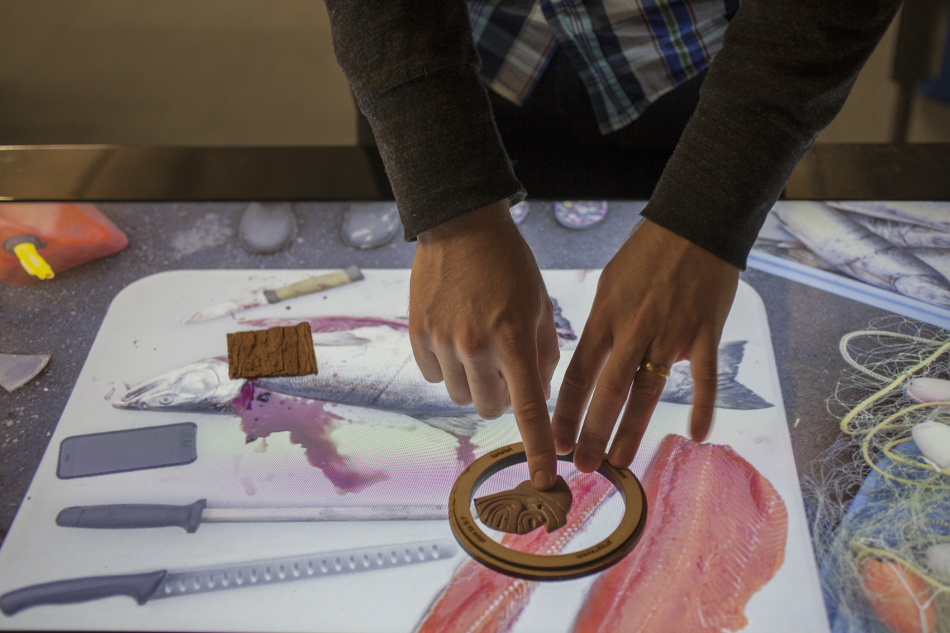Opening this month at the Museum of Anthropology at UBC: ʔeləw̓k̓ʷ – Belongings

Testing ring and replicas for Belongings: the c̓əsnaʔəm Tangible Table, 2014, Reese Muntean, Digital Photograph, Copyright 2014.
I am very excited to be a part of team of curators, interaction designers, artists, and computer scientists who have developed a new tangible table-top exhibit called ʔeləw̓k̓ʷ – Belongings: A Tangible Table in c̓əsnaʔəm: the city before the city at the Museum of Anthropology at the University of British Columbia. c̓əsnaʔəm,; the city before the city opens this month, and our project will be installed at MOA until Dec. 2015.
c̓əsnaʔəm,; the city before the city is an historic partnership of three Vancouver institutions: the Musqueam Indian Band, the Museum of Vancouver, and the Museum of Anthropology at the University of British Columbia. All three will explore this extremely significant ancient village site on which part of Vancouver was built. In the three different exhibitions, visitors will learn not only about the past, but about Musqueam culture and community today. Dr. Susan Rowley, Jordan Wilson, and Lisa Uyeda at the Museum of Anthropology at UBC (MOA) are working with Dr. Kate Hennessy, Dr. Alissa Antle, Rachael Eckersley, Brendan Matkin, and Reese Muntean at Simon Fraser University’s School of Interactive Arts and Technology to develop an interactive tangible tabletop as a component of the exhibition at MOA, which will run from January to December 2015.
ʔeləw̓k̓ʷ – Belongings uses tangible replicas of Musqueam belongings excavated from c̓əsnaʔəm, as well as contemporary objects that are a part of everyday Musqueam life to represent the long history of salmon fishing and the continuity of related knowledge at c̓əsnaʔəm. Drawing on contemporary community voices and Musqueam’s ancestral language hən̓q̓əmin̓əm̓, each replica has its own story to tell, which is accessed when placed on the tabletop. By connecting the replicas to visual elements on the salmon cutting table, the table invites visitors to learn about the many cultural and historical meanings of belongings from c̓əsnaʔəm, and about how technological knowledge associated with activities such as salmon fishing have a fundamental place in Musqueam history and persists today as part of everyday life.

